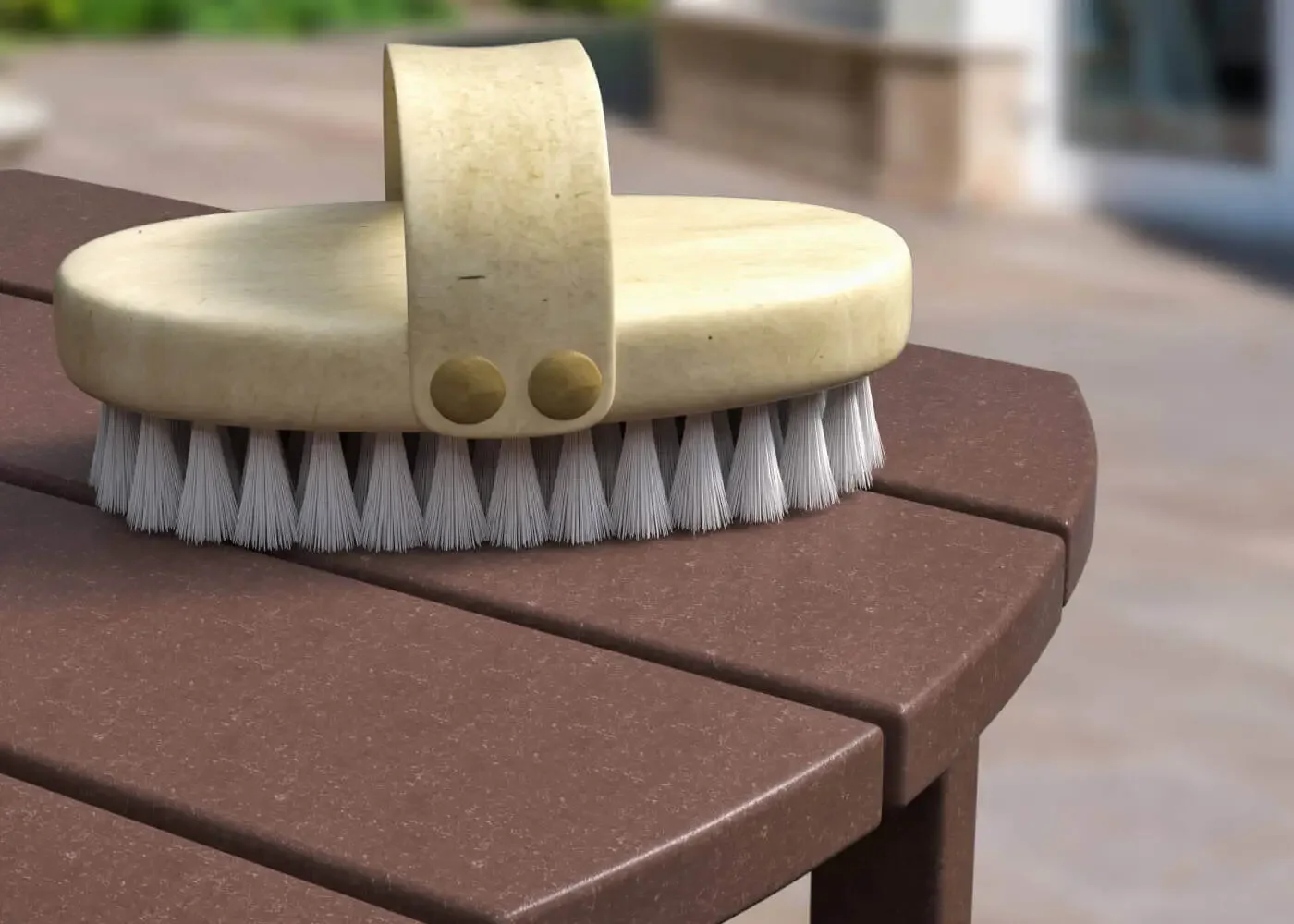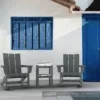What is HDPE Patio Furniture
Furniture for use outside includes patio and garden furniture. Manufacturers must employ durable materials, including high-density polyethylene, to create the furniture because it is frequently exposed to the elements (HDPE). As a result, makers of outdoor or garden furniture use HDPE to create HDPE patio furniture.
To create outdoor patio furniture, the majority of manufacturers employ recycled HDPE. A non-biodegradable plastic called HDPE can take millennia to break down. This plastic is recycled in a lot of recycling facilities, where it is then sent to companies that develop other items.
Impact-resistant and having a great strength-to-density ratio are two qualities of HDPE plastic sheets. Both of these characteristics make it extremely robust and perfect for outdoor furniture. It won’t break or crack easily. HDPE plastic sheets can be used to make outdoor furniture that will last for years with little upkeep.
Because HDPE has a high melting point, the material remains stiff at extremely high temperatures. In an identical manner, it is resistant to low temperatures and won’t crack under extreme cold. HDPE furniture can be utilized year-round with no apparent limitations.
Why HDPE is a Good Material for Outdoor
HDPE is a strong, weatherproof plastic that will withstand rain, sun, cold, heat, and the wear and tear of your backyard for many years without losing its appearance. Additionally, it can be utilized in numerous fashionable outdoor patio furniture designs.
1- HDPE is Waterproof
HDPE is waterproof, in contrast to wood, metals, and other outdoor materials that could be destroyed by rain and moisture (e.g., wood swelling, metal rusting). Due to its lack of pores, HDPE won’t absorb moisture or water. Because of this characteristic, it won’t expand or crack from too much moisture, unlike wood. HDPE has a high level of mold and mildew resistance due to its waterproof nature.
2- HDPE Outdoor Furniture Won't Fade
You may already be aware that long-term exposure to sunshine can cause some plastics or other outdoor materials to fade or discolor. To keep the furniture from fading in the sun, HDPE outdoor furniture is frequently sprayed with UV-inhibiting stabilizers. Additionally, the color of HDPE material is uniform throughout due to the way that most HDPE outdoor furniture is created. This makes it more difficult for the fabric to fade in the sun. HDPE outdoor patio furniture is, therefore, particularly UV-resistant.
3- HDPE Outdoor Furniture is Low Maintenance
Fortunately, HDPE materials often only need minor upkeep occasionally. If you detect any dirt or dust on your patio furniture, all you need is some mild soap, water, and a soft-bristle brush to get it to look like new again. In contrast to alternatives like metal that could rust or wood that can rot or split, HDPE is a material that requires very little maintenance due to its great weather resistance and longevity.
4- HDPE is Designed to Endure All Seasons and All Climates
Do you worry about your outdoor furniture sets lasting through the winter? What about enduring the summer’s sweltering temperatures or being outside by salt water? The fact that HDPE outdoor furniture can resist almost any season and environment year-round for many years is one of its best features. As near as you can come to “set and forget,” garden patio furniture is with this form of outdoor furniture. To maintain the durability of your furniture, however, we advise that you cover it when not in use, if at all possible.
How to Clean Your HDPE Outdoor Furniture
No matter how hardy and long-lasting your HDPE furniture is, you shouldn’t ignore it. If the furniture is neglected for a long time, stains may develop, making it more difficult to clean and prepare for use. The furnishings will also lose their shine. As a result, you need to regularly clean the furniture.
Cleaning HDPE Furniture Surfaces
For cleaning HDPE furniture surfaces, use these steps:
- Combine warm water and mild liquid soap in a bucket or other container. Because it is affordable and easily accessible at your local supermarket, we advise using mild dish soap.
- Rub the mixture onto the surfaces to remove dust and filth after soaking a clean cloth or sponge in the mixture. The sponge or cloth should be damp to wet. To clean the surfaces, you don’t have to submerge them in water.
- To make sure you completely remove the dirt, wipe the surfaces in tiny, overlapping circles.
- At this time, you can rinse with fresh water.
- Lastly, place your furniture somewhere to dry using a hose or a clean cloth dipped in clean water.
How To Clean Metal Hardware on HDPE Furniture
The metal hardware on your HDPE furniture should be checked before you resume your weekend activities. Metal hardware is included with some HDPE sections to hold them together or allow for movement.
Stainless steel is a common material for these metal fastenings. Because of its strength and resistance, it needs special cleaning procedures to make sure it lasts. To avoid damage and weakness, the hardware should survive for at least as long as the lumber.
So, if the stainless-steel hardware on your HDPE furniture has to be cleaned, follow these steps.
- After mixing mild dish soap and warm water in a bucket, carefully scrub the fasteners with a soft-bristled brush. To prevent removing the metal’s protective covering, don’t use too much water or pressure.
- Use the same mixture and tools to get rid of the leftovers if you see any corrosion symptoms, and then give everything a good rinse with clean water.
- A dry cloth can be used to dab some of the water away on a chilly day to prevent corrosion. Make sure that these components dry thoroughly and fast.
How to Clean Aluminum Parts on HDPE Furniture
Additionally, some HDPE furniture pieces have aluminum components that enable features like swiveling. Additionally, it may be used for decoration.
Aluminum is sturdy metal, but it will require more frequent upkeep, necessitating a thorough scrub. Make sure the aluminum components are not heated from sun exposure before cleaning them to avoid getting burned. In addition, take these actions:
- Warm water and mild dish soap should be combined in a bucket, then a clean sponge or cloth should be dipped into the solution and used to clean the aluminum surfaces.
- To prevent water stains and the removal of the protective layer, thoroughly remove all the dirt while using a minimal amount of water.
The furniture can then be properly rinsed with clean water and left to dry. To aid in quicker drying and avoid corrosion, you might dab some of the water droplets with a dry cloth once more.
How To Clean Outdoor Furniture Fabrics
The upholstery of an HDPE sunbed, couch, or Adirondack chair with pillows needs to be cleaned. Regular cleaning is necessary to keep the mattress cover, pillow, and cushion from becoming stained. To avoid fading, these textiles are frequently resistant to weather. But you must still clean them to preserve their brilliance and prevent fabric deterioration.
- First, remove any loose dirt from the fabrics by brushing or dusting. It keeps the item from becoming embedded in the fabric and makes cleaning it simpler.
- Wash the textiles in warm water with a moderate dish soap. To wash the covers individually, it would be great if you could take them off. If not, though, you can still clean materials using a clean towel dipped in the mixture.
- Then, rinse these objects with clean water. Avoid soaking the pillows or cushions in water because it will make them take longer to dry. They might also not dry uniformly, leading to issues like mold growth and unpleasant odors.
- To dry, place the pillows and cushions on their side. Prior to rearranging them on the seats, make sure they are entirely dry. It’s best if you can clean fabrics outside on a sunny day.
Care and Maintenance Activities for HDPE Outdoor Furniture
Cleaning your furniture won’t be enough to keep it in good condition and make it endure a long time. These elements require maintenance as well.
Store furniture when it's not in use
If your furniture won’t be in use for a time, you must first store it. The majority of individuals stay indoors during the winter and other chilly seasons instead of utilizing their outside setting. If this applies to you, think about storing the furniture rather than leaving it outside all year.
The lifespan of your outdoor set is gradually shortened by prolonged exposure to the outdoors. As an investment, these pieces should be made to endure a little longer if you have the chance.
Avoid using acetone and other solvents
Acetone and similar compounds will take the stain off, but they will also ruin the color and shine of the wood. While some totally disappear, some retain a yellowish coating on the region. In addition to weakening the lumber there, this makes the furniture ugly.
Avoid harsh abrasives
Abrasives like steel wool and strong bristle brushes shouldn’t be used as a remedy. They will be permanently “scarred” by these abrasives’ severe scratches. Long-term use of severe abrasives will also degrade the material and leave color spots, giving the pieces an ugly appearance. Avoid using these, as well as other harsh materials, when cleaning the parts.
Frequently Asked Questions
1- How Long Does HDPE Outdoor Furniture Last?
It is the furniture material that experts believe will survive the longest. You may even receive a 20-year or longer guarantee from some manufacturers.
2- Can HDPE Furniture Be Left Outside in Winter?
The HDPE furniture can be placed outside, yes. It can survive winter conditions because it is extremely heavy and nonporous. Its shape or performance won’t be altered by snow or rain.
3- How Often Should I Clean My HDPE Outdoor Furniture?
Regular cleaning is required to ensure the long-term durability of your HDPE outdoor furniture. In contrast, extensive cleaning should be done at least twice a year.
4- Can I Power-Wash My HDPE Outdoor Furniture?
To remove dust, filth, and grime quickly, use a water hose or high-pressure washer (with no more than 1,500 psi).
5- How Should I Store My HDPE Outdoor Furniture?
When not in use, create a storage area for your outdoor furniture and keep it out of the sun and the elements by storing it there in a cool, dry location. You may clean and utilize them when the sun comes out again. Longevity will be ensured.
Products Not Found








